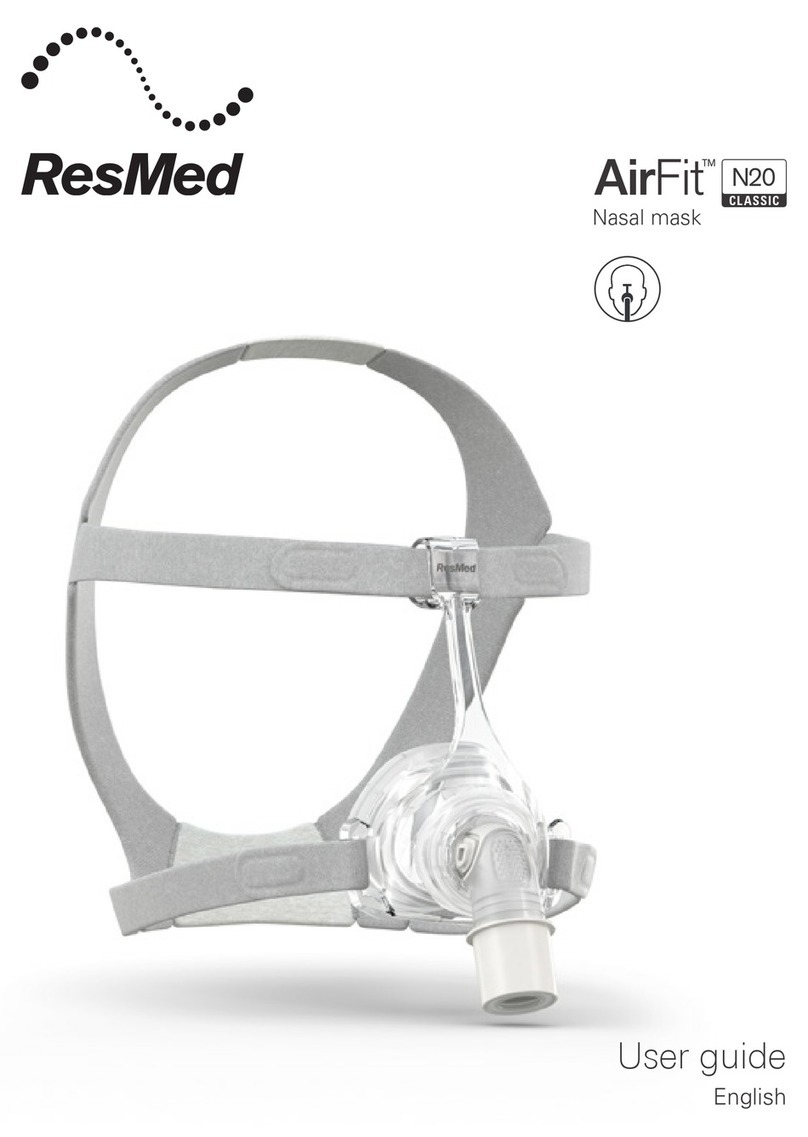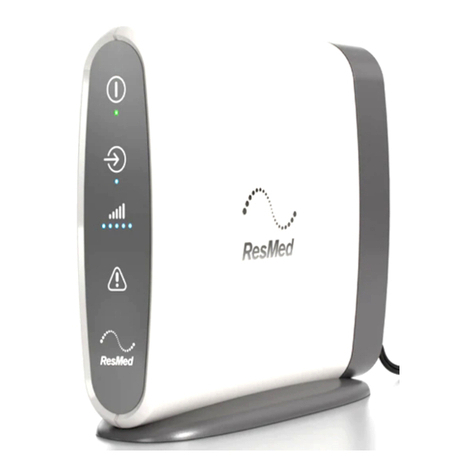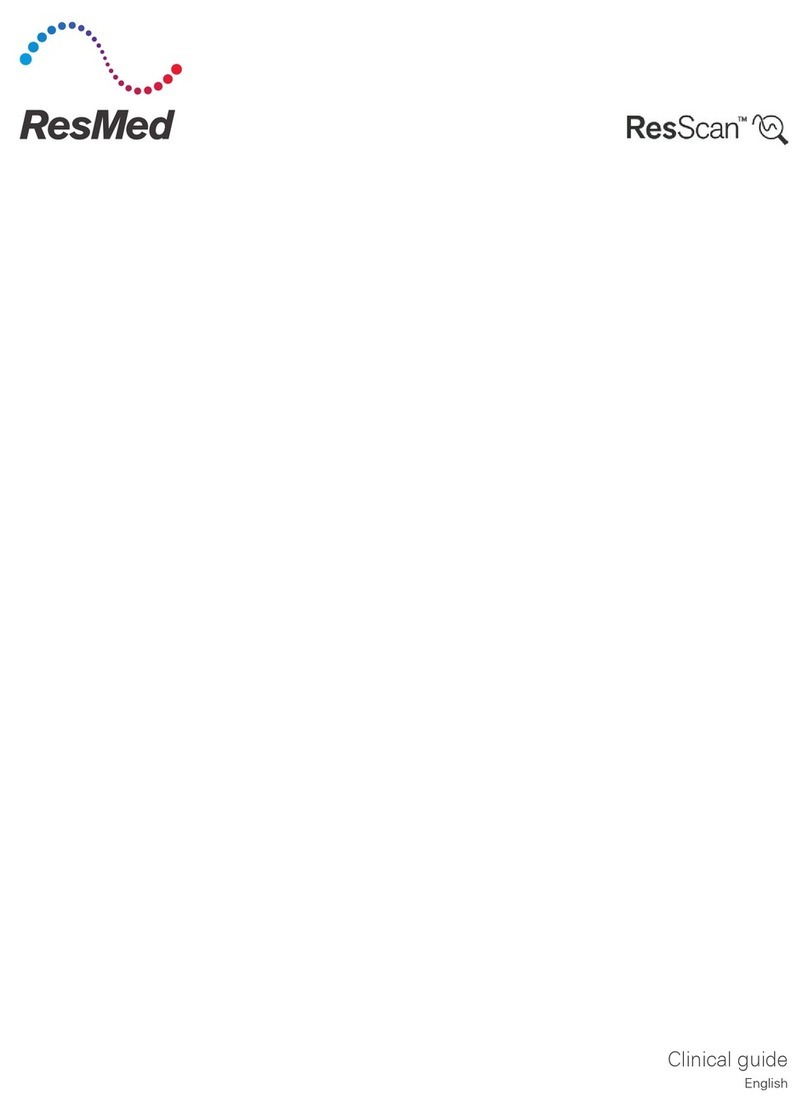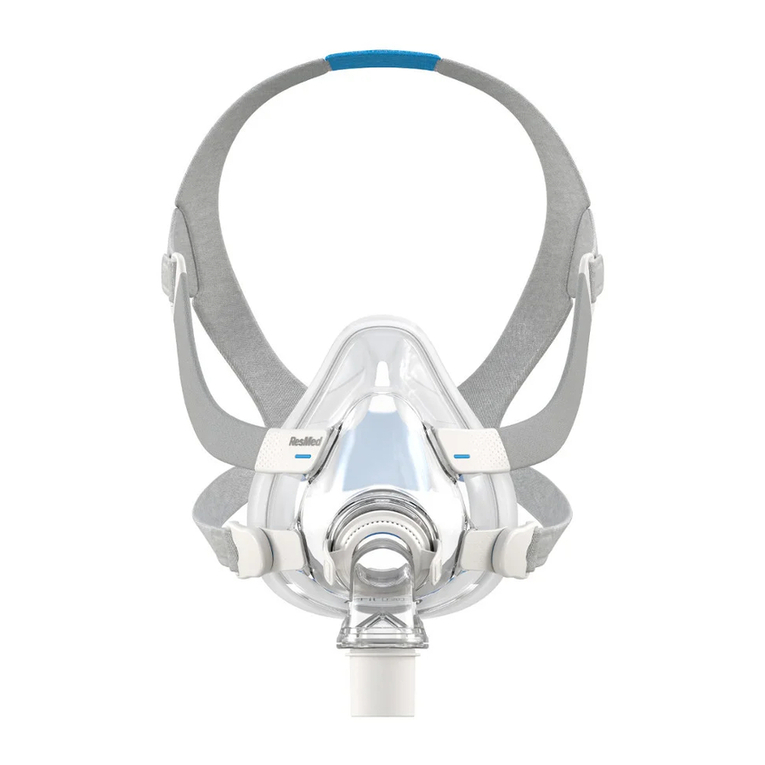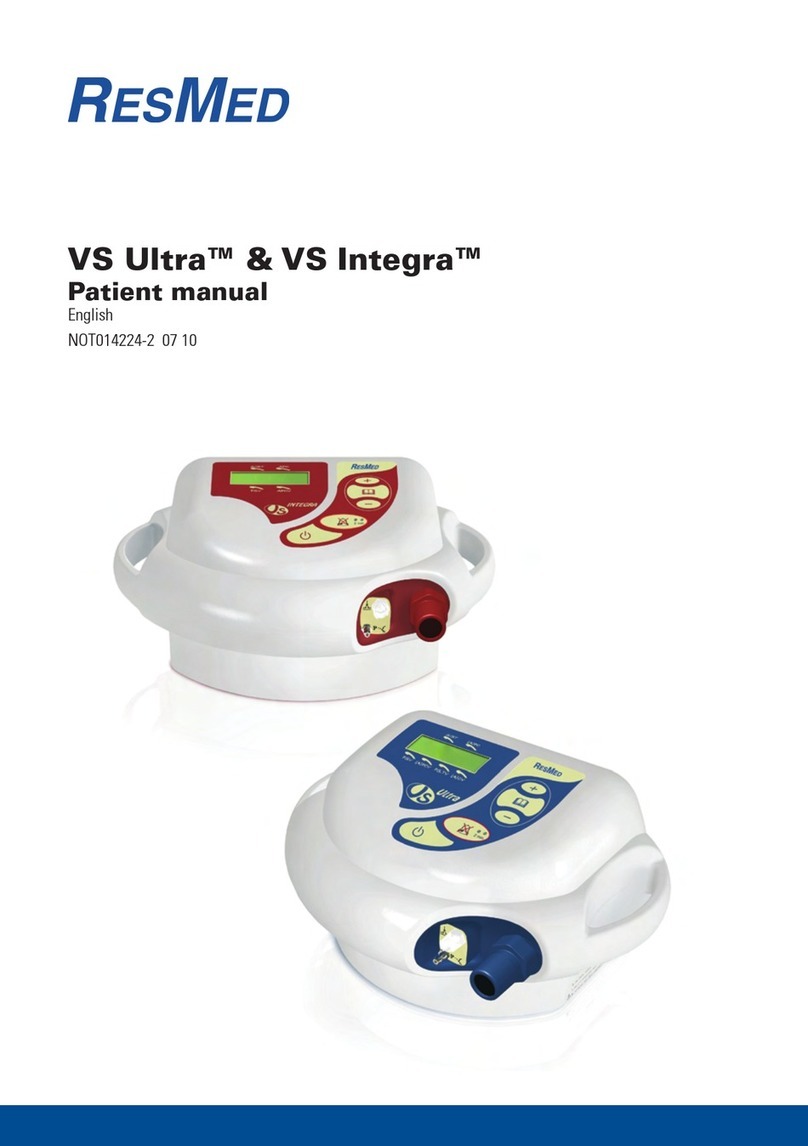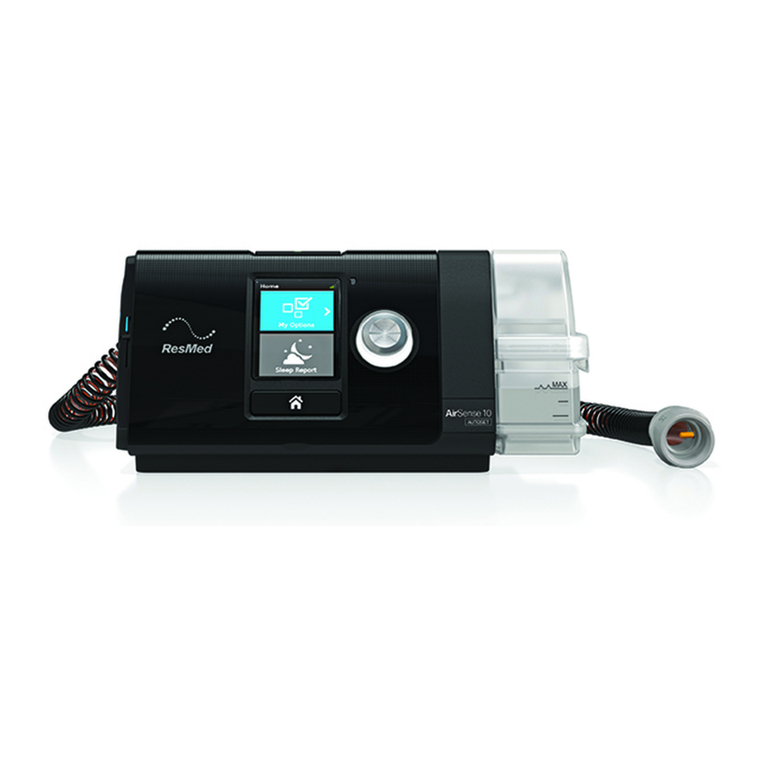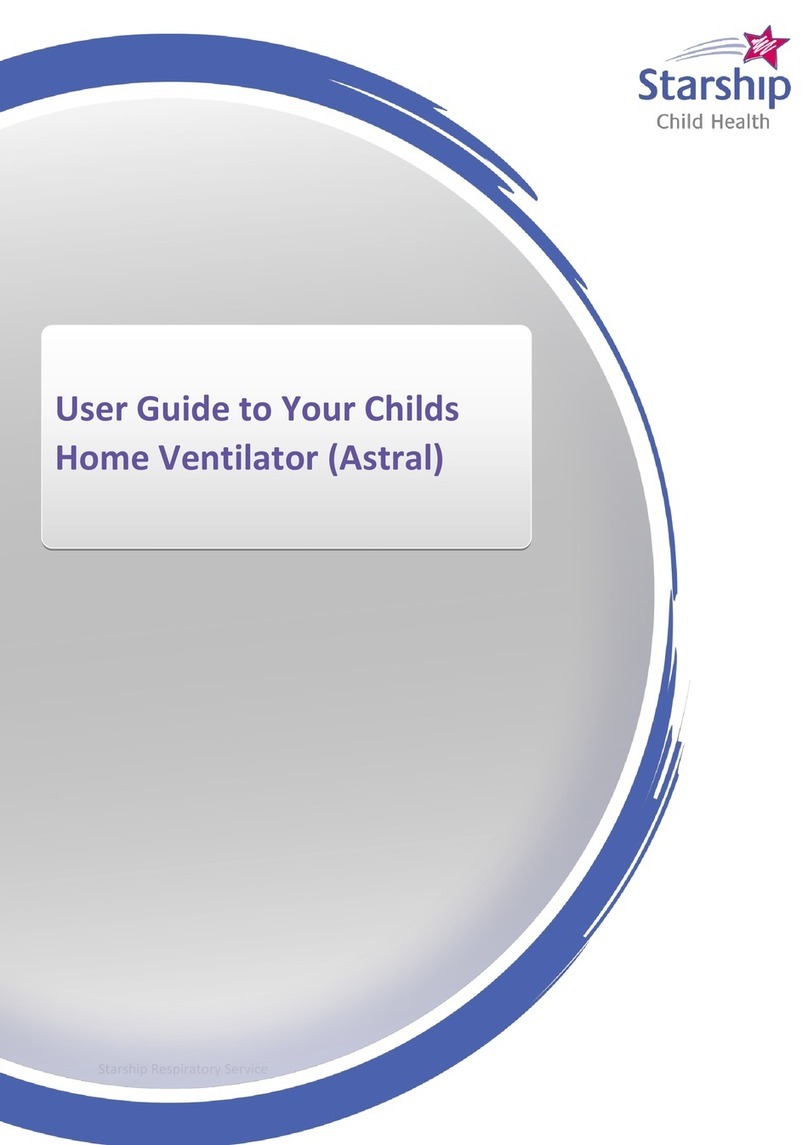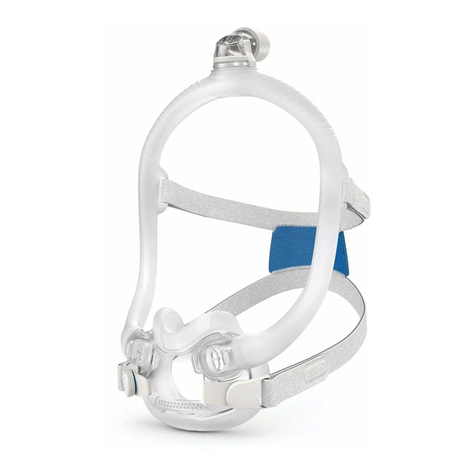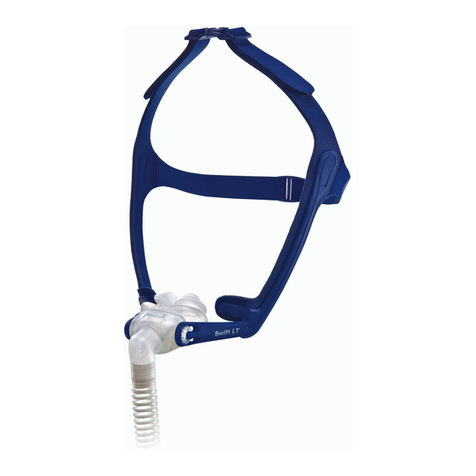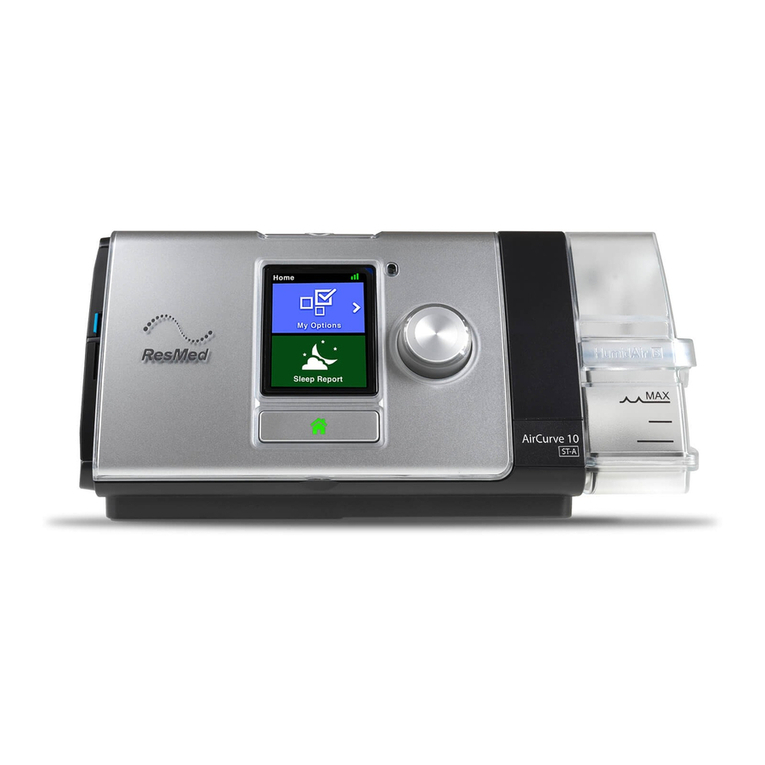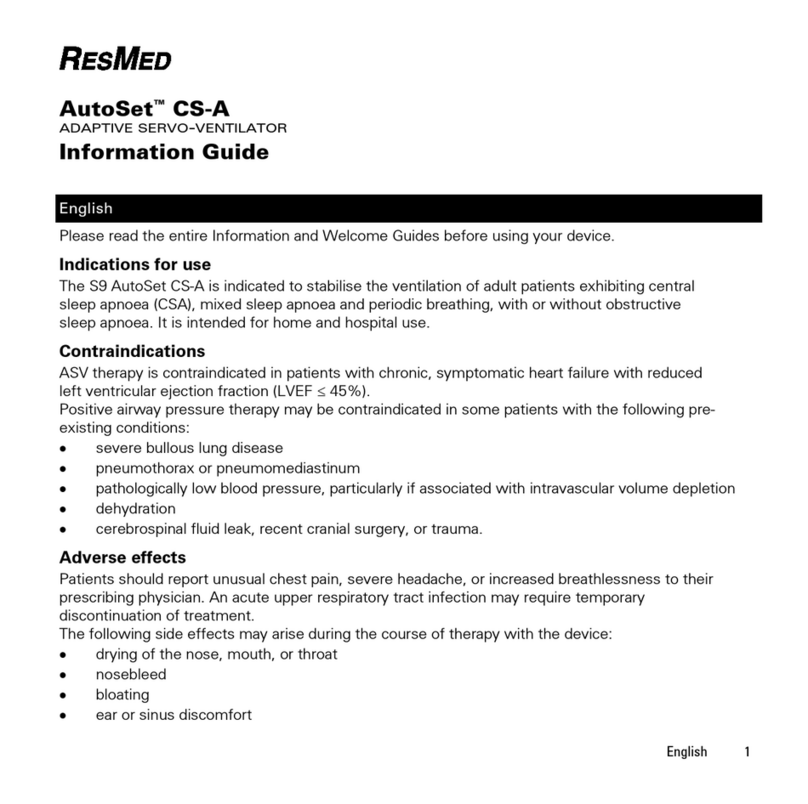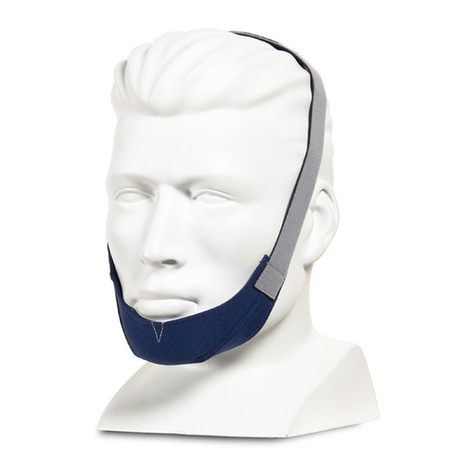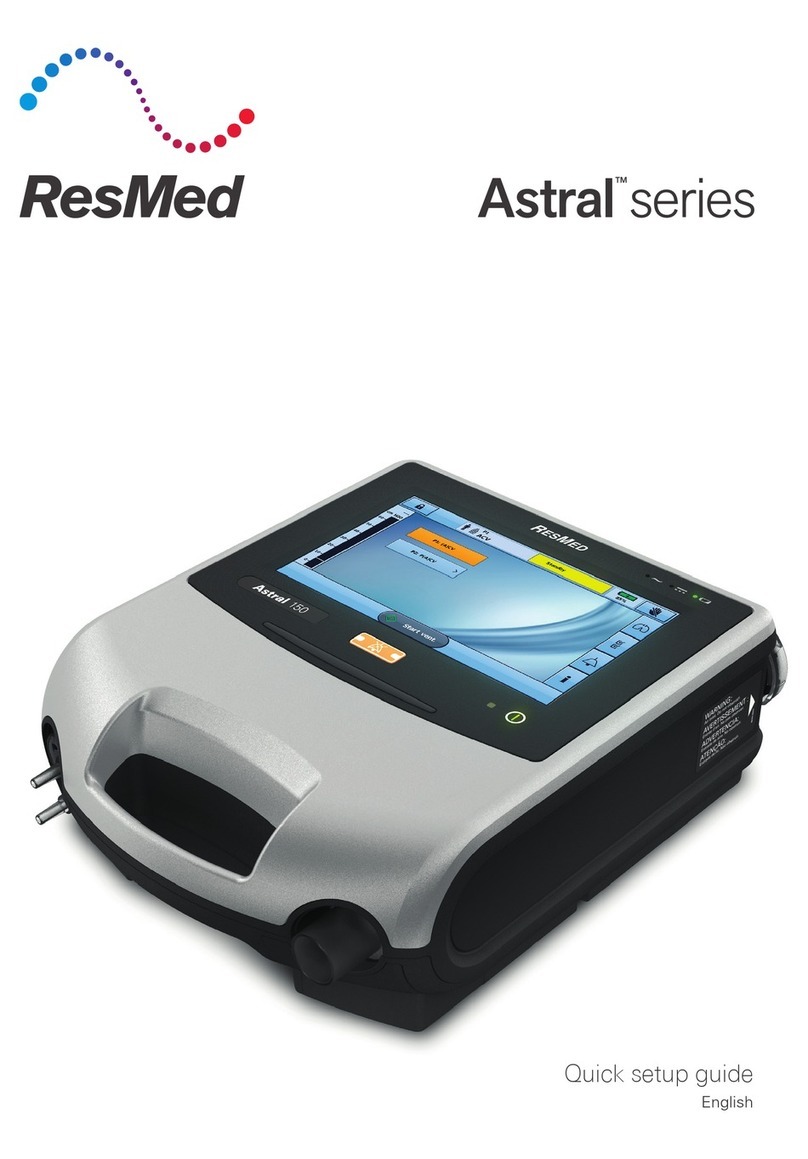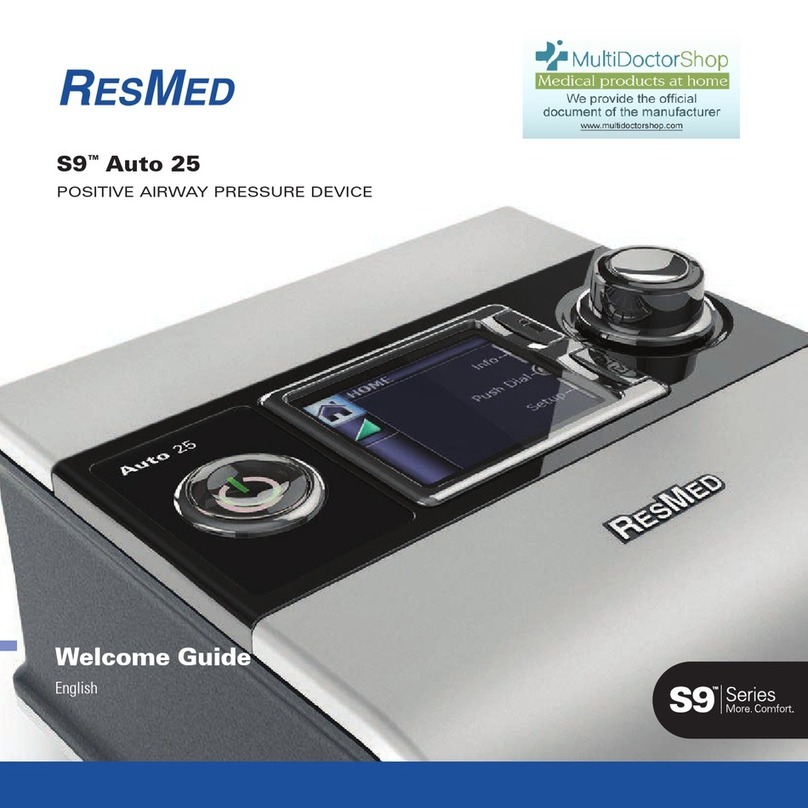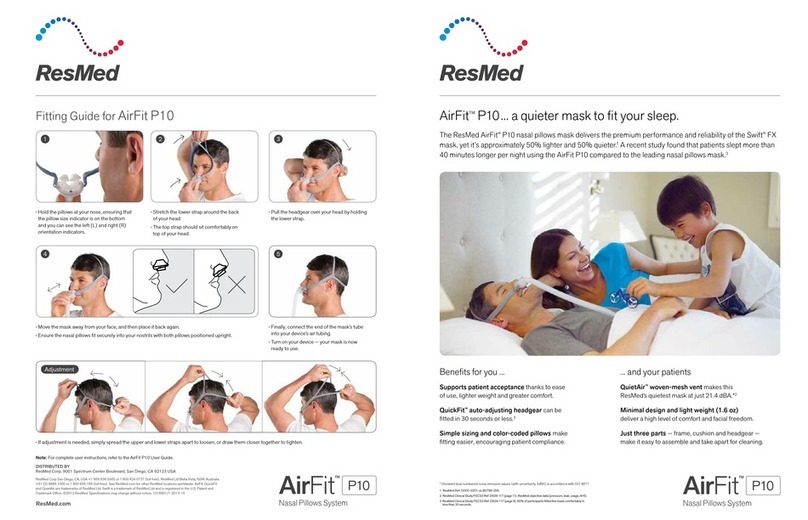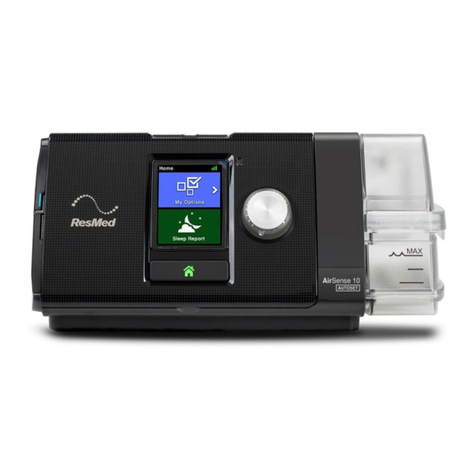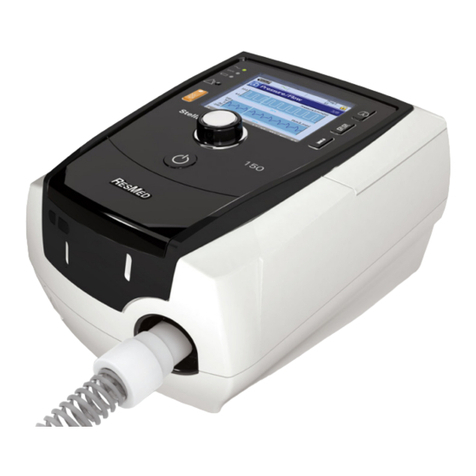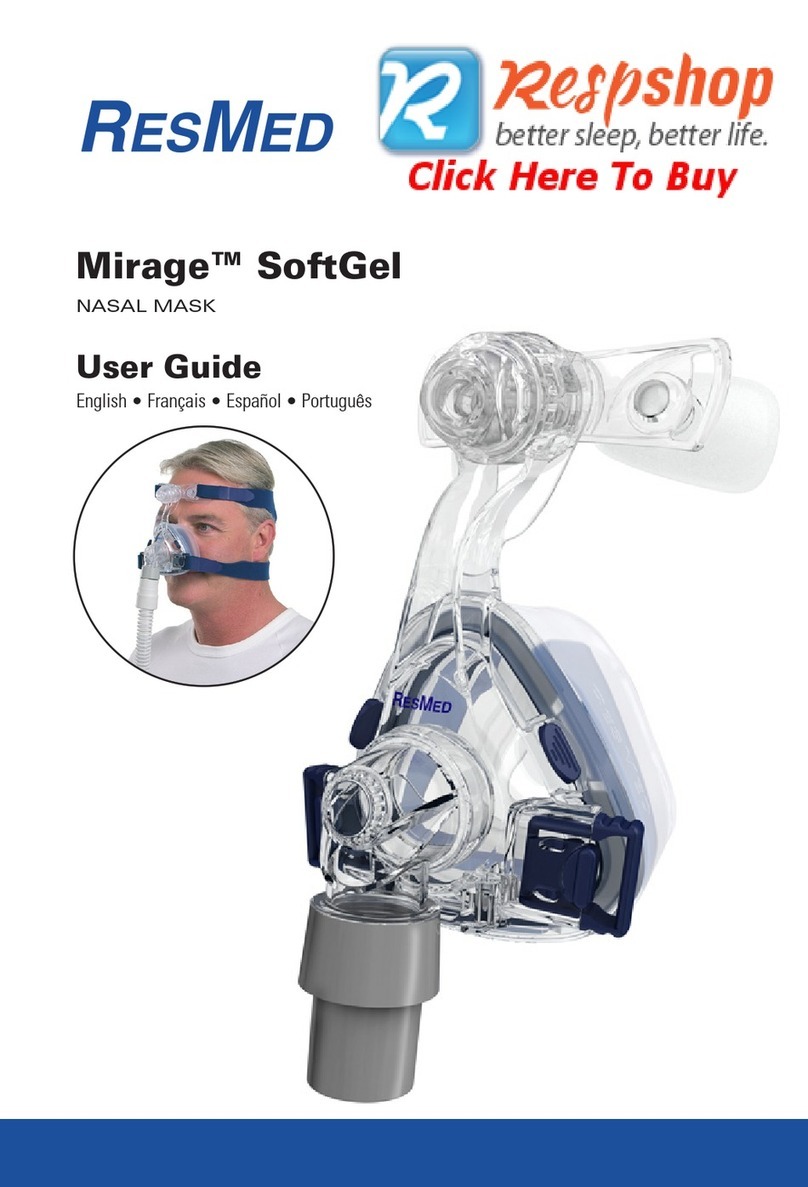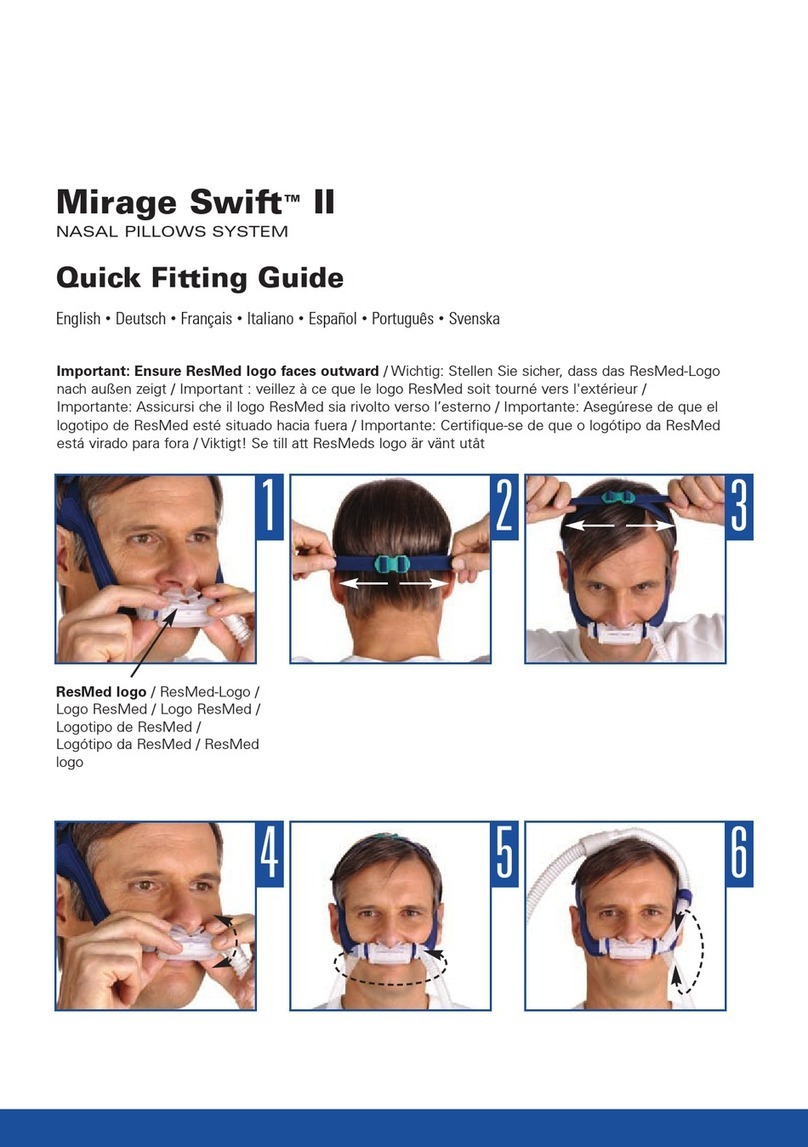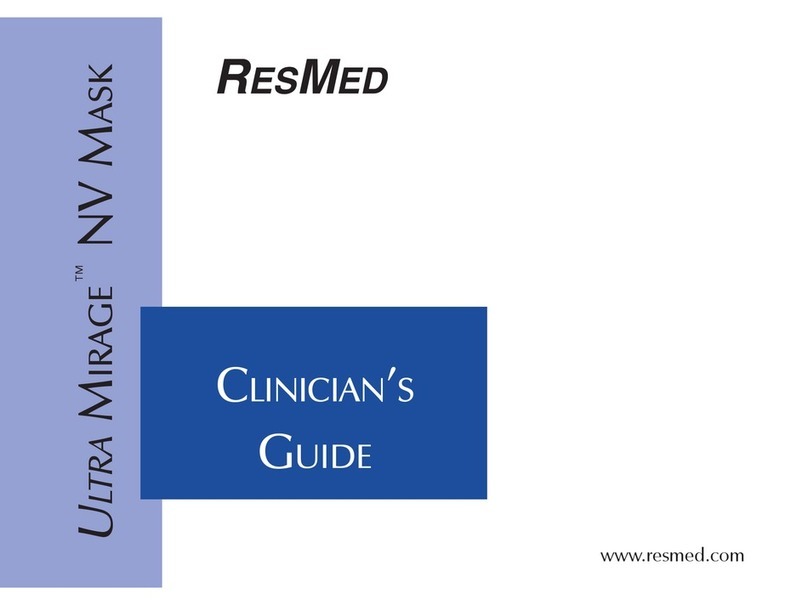
English 2
Thermal disinfection procedures - Manual
Disassembly Disassemble the mask according to the instructions in the User Guide.
Cleaning Alconox
Cushion:
1. Soak the component in a solution of Alconox diluted with drinking quality water at 1%, ie, 10 g per litre,
at 20-25°C, according to manufacturer’s instructions.
2. Whilst immersed in the solution, clean with a soft bristle brush for 1 minute. Pay particular attention to all
crevices and cavities.
3. Rinse by shaking vigorously in drinking quality water (five litres per component). Repeat for one more time
using fresh water.
4. Inspect and if required, repeat washing until visually clean.2
5. Allow the mask components to air dry out of direct sunlight.
Headgear:
1. Soak the component in a solution of Alconox diluted with drinking quality water at 1%, ie, 10 g per litre,
at 20-30°C, according to manufacturer’s instructions.
2. Whilst immersed in the solution, clean with a soft bristle brush for 2 minutes. Pay particular attention to
all crevices and cavities.
3. Squeeze to remove excess solution.
4. Rinse by repeatedly squeezing under drinking quality water for 30 seconds at 20-30°C. Repeat for two
more times. Squeeze to remove excess water.
5. Inspect and if required, repeat washing until visually clean.2
6. Allow the mask components to air dry out of direct sunlight.
Elbow (Manual):
1. Rinse the component under fast flowing drinking quality cold tap water for 1 minute. Pay particular
attention to all crevices and rotate movable parts.
2. Soak the component for 5 minutes in a solution of Alconox diluted with drinking quality water at 1.5-2%
and at 40-50°C. Ensure the component is fully immersed in the solution and there are no air bubbles.
3. Whilst immersed in the solution, agitate the component vigorously for another 3 minutes, then brush the
outside of the component for another minute. Pay particular attention to the swivel and vents.
4. Rinse by shaking vigorously in 5 litres of tap water for a minimum of 1 minute. Repeat for one more time
under a fast flowing water for another minute. Shake the component to remove excess water.
5. Allow the mask components to air dry out of direct sunlight.
Elbow (Manual-Ultrasonic bath):
1. Rinse and clean the component with a soft bristle brush for 1 minute under fast flowing drinking quality
cold tap water at 20-30°C. Pay particular attention to all crevices and rotate movable parts.
2. Sonicate the component for 20 minutes in an Ultrasonic cleaner filled two-thirds of Alconox solution
diluted with drinking quality water at 1% and at 20-30°C. Ensure the component is fully immersed in the
solution and there are no air bubbles. Use a basket/tray/rack to prevent contact between the component
and the tank.
3. Rinse by shaking vigorously in 5 litres of tap water at 20-30°C for a minimum of 1 minute. Repeat for one
more time.
4. Allow the mask components to air dry out of direct sunlight.
Disinfection 1. Using a certified hot water disinfection system, soak the disinfectable mask components using a temperature-time combination1:
Cushion (EN ISO 15883-1):
• 70°C for 100 minutes
• 75°C for 30 minutes
• 80°C for 10 minutes
• 90°C for 1 minute
• 93°C for 10 minutes.
Headgear/elbow:
• 93°C for 10 minutes.
2. On completion, remove the mask components from the hot water disinfection system.
3. Allow the mask components to air dry out of direct sunlight.
Inspection Perform a visual inspection of each mask component. If any visible deterioration of a mask component is apparent (cracking, crazing, tears etc), the mask component should be discarded and replaced. Slight discolouration
of the silicone components may occur and is acceptable.
Reassembly Reassemble the mask according to the instructions in the User Guide.
Packaging and storage Store in a dry, dust-free environment away from direct sunlight.
Storage temperature: -20°C to 60°C.
1 Calculated and predicted from known thermal inactivation kinetics of vegetative micro-organisms subjected to thermal disinfection (EN ISO 15883-1) and they are inclusive of the time-temperature combination recommended by the APIC (Associations for Professionals in Infection Control and
Epidemiology) and RKI (Robert Koch Institute).
2 Failure to clean the mask component as indicated may result in inadequate disinfection and sterilisation.
